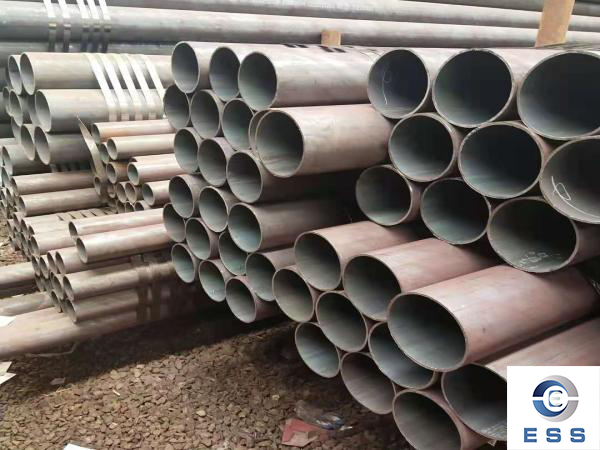Causes of decarburization of
carbon steel pipe

Concept and causes:
Carbon steel pipe are a common pipe material in the steel industry, usually used to transport fluids, gases and solids. During the production process of carbon steel pipe, decarburization may occur on the inner and outer surfaces of the steel pipes, that is, the surface loses a certain depth of carbon elements, which affects the physical properties and corrosion resistance of the pipes. The main causes of surface decarburization of carbon steel pipe are oxidizing gases such as oxygen, water vapor and carbon dioxide. When these oxidizing gases come into contact with the surface of the heated steel wire, oxidation and decarburization occur simultaneously. Since the solid-solubilized carbon in the iron has a relatively large affinity with these gases, the carbon on the surface is removed.
The main causes of decarburization are as follows:
1. The increase of elements such as Si and Mn in liquid steel increases the FeO content in the steel, thereby absorbing oxygen to degrade the C content in the steel, causing surface decarburization.
2. When smelting steel ingots, there are a large amount of CO and H2 in the furnace gas. When they directly contact the molten steel and the surface of the billet, they will react with the carbon elements on the surface, resulting in decarburization of the steel surface.
3. During the heat treatment process, if the temperature of the steel pipe is too high or the treatment time is too long, it will also cause surface decarburization. Standard specifications and test methods:
In order to control the decarburization of the inner and outer surfaces of carbon steel pipe, a series of standard specifications and test methods have been formulated at home and abroad to ensure that the quality of steel pipes meets the standards.
The commonly used domestic standard specifications include the following three:
1. GB/T 20125-2006 carbon steel pipe surface quality inspection method
2. GB/T 6478-2001 carbon steel pipe inner and outer surface decarburization inspection method
3. GB/T 9948-2006 Technical conditions for carbon steel pipe for petroleum cracking gas transportation
Among them, GB/T 6478-2001 is an important standard for detecting decarburization on the inner and outer surfaces of carbon steel pipe, which includes the following test methods.
The following test methods:
1.Inspection method: visually inspect whether there is decarburization on the inner and outer surfaces of carbon steel pipe.
2.Chemical composition analysis method: chemical analysis method is used to determine the carbon content on the surface of steel to determine whether there is decarburization.
3.Metallographic microscope method: Use a metallographic microscope to observe the metallographic structure of the surface of the carbon steel pipe to determine the decarburization situation.
4.Mechanical property test method: Through mechanical tests, such as hardness tests, detect whether there is decarburization on the inner and outer surfaces of the steel pipe.
All of the above detection methods have their own advantages and disadvantages, and it is necessary to select the appropriate method for detection according to the specific situation.
Surface quenching of carbon steel pipe only changes the surface structure, but does not change the
heat treatment of the surface chemical composition. It can be achieved by high-frequency, medium-frequency or power-frequency current induction heating or flame heating. The common feature is that the surface of the Wuxi seamless pipe is quickly heated to the quenching temperature, and when the heat has not yet been transferred to the core of the part, it is quickly cooled, so that the surface hardness is high, while the core still has high toughness.
In general, decarburization on the inner and outer surfaces of carbon steel pipe is a serious quality problem, which will directly affect the service life and safety performance of the steel pipe. Therefore, in the production and quality control process of carbon steel pipe, it must be strictly tested and controlled in accordance with standard specifications to ensure that the quality of the steel pipe meets the relevant standards and requirements.
Read more: Roughness of carbon steel pipe













 Eastern Steel Manufacturing Co.,Ltd not only improve product production and sales services, but also provide additional value-added services. As long as you need, we can complete your specific needs together.
Eastern Steel Manufacturing Co.,Ltd not only improve product production and sales services, but also provide additional value-added services. As long as you need, we can complete your specific needs together.










